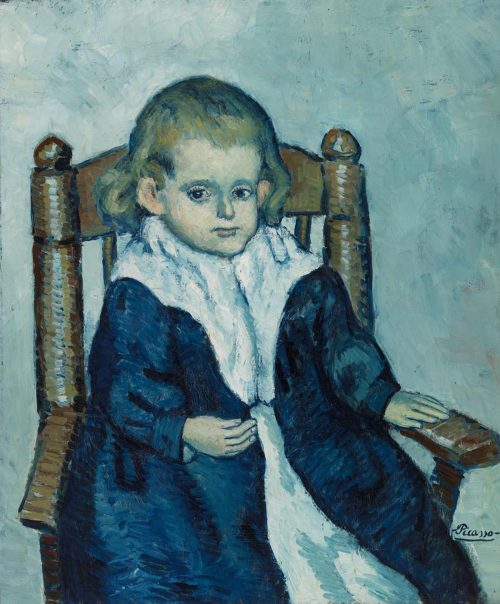
Searching for God at the PMA,
But Finding Solace at the Barnes
by Dereck Mangus
I have visited the Philadelphia Museum of Art (PMA) twice: once over twenty years ago, and again this past summer. Each time I made a point of swinging by Gallery 182, a room dedicated to Marcel Duchamp. Duchamp is one of the two most important twentieth-century artists – the second being Pablo Picasso – and the PMA has the world’s largest collection of his work. It is there where you will find his most iconic pieces: “The Bride Stripped Bare by Her Bachelors, Even,” also known as “The Large Glass”; a 1950 version of “Fountain,” the infamous urinal submitted under the pseudonym “R. Mutt” to the inaugural exhibition of the Society of Independent Artists in New York in 1917; and his final masterpiece, “Étant donnés…,” a site-specific installation the artist clandestinely worked on over a twenty-year period, from 1946 to 1966, after telling the art world he had ceased making art in order to focus on chess.
On my first visit to the PMA, in the late ‘90s, my art school buddy and I discovered Gallery 182, and were blown away to find so many Duchamps in one place. After making sure no guards were around, we spun his “Bicycle Wheel,” a “readymade” sculpture consisting of a bicycle fork and front wheel mounted onto an ordinary wooden stool. It was during this visit that I first encountered “God,” a 1917 collaboration between Morton Livingston Schamberg and Baroness Elsa Hildegard von Freytag-Loringhoven, who were briefly lovers and part of the New York Dadaist scene that centered around Duchamp. “God,” a sort of sister piece to “Fountain,” is a 10½-inch high cast iron plumbing trap turned upside down and mounted on a wooden mitre box. As with Duchamp, these two Dadaists reveled in overturning and parodying the established norms of Western art and beauty. Their “God” is an ironic idolization.
So, it was with a certain level of disappointment that when visiting the PMA this past summer, I found that much of the Duchamps were down. I asked the guard where they were, and he explained that most of the artist’s works were on tour in Asia as part of the traveling exhibition, The Essential Duchamp, commemorating the 50th anniversary of the artist’s death. I inquired about “God,” but he seemed unfamiliar with the piece. Then after touring much of the rest of the museum, I decided, as many visitors to the city do, to get a Philly Cheese Steak on South Street for lunch. Afterwards, I planned to visit the Barnes Foundation for the first time. I was a guard at the Isabella Stewart Gardner Museum in Boston for several years and had often heard how the two institutions were very similar in terms of their holdings and the idiosyncratic nature of their respective collectors.
After getting stuck in traffic and being misled by the GPS a few times, I finally arrived at the Barnes rather late in the day, with only an hour left before the museum closed. The added pressure of limited time can actually enhance a museum visit. Besides, you don’t want to spend too much time in a museum, lest you begin to suffer from “art fatigue.” Nonetheless, I wanted to be sure to see as much as possible, for I wasn’t sure how soon it would be before I would return to the Barnes. And though I had been told many times before about the many masterpieces housed there, nothing could have prepared me for what I was about to experience. After passing through the gorgeous modern lobby area, I climbed the stairs to the top floor and had what Ben Lerner refers to in his novel, Leaving the Atocha Station, as a “profound experience of art.”
I entered a medium-sized room and found there, hung in the salon style, some of the most beautiful works of art I had ever seen. It seemed somehow unlikely that so much beauty could be contained in one place. It seemed impossible that they should exist at all. And yet, there they were: Cézannes, Monets, and Renoirs, stacked high from floor to ceiling, all glowing with a strange inner life, as though they were watching me as I made my way through the gallery. Dumbfounded, I walked towards a wall of paintings as though in a trance, like I was being pulled there under the influence of some mysterious spell. It felt as though I were in a dream. Standing before this wall, two paintings in particular – “Child Seated in an Armchair” from 1901 on my left; and “Acrobat and Young Harlequin” from 1905, on my right, both by Picasso – transfixed me for what seemed like an eternity.
I kept looking back and forth between the two pictures, triangulating between the faces of the “Child Seated” from his Blue Period, and those of the two young men in “Acrobat and Young Harlequin” from the slightly later Rose Period. Their eyes pierced my whole being. I looked, and they looked back. Staring out at me from his stool, the watery-eyed child seemed to be saying, “I am you, but no longer,” while the slightly more disillusioned faces of the tired street performers suggested the continued struggle of existence. (As an artist myself, I am never really sure if it’s all really worth it.) Then, from somewhere deep inside me, a potent well of emotions stirred, and before I realized what was happening, I found myself weeping in front of these beautiful pictures. But I didn’t feel sad. I felt cleansed.
What a strange day, searching for “God” in one museum, but finding solace in another. I will always remain intrigued by Duchamp and his ilk. It’s good to critique and poke fun at the clichés of art history. Yet, while they may make me laugh and provoke me to ponder what art could be, they will never profoundly move me… not like the Picassos did that day at the Barnes last summer, when I experienced what great art is.
Bio
Dereck Stafford Mangus is a visual artist and writer based in Baltimore. His artwork is currently on view at Full Circle Gallery, and he has exhibited in galleries throughout Baltimore. Last May, his essay, “Picabia’s Révérence,” was published in Full Bleed, the Maryland Institute College of Art’s annual art and design journal. In 2018, Mangus’ exhibition review of “Odyssey: Jack Whitten Sculpture, 1963-2017” was selected as the winner of the Frieze Writer’s Prize.










